Tarmac Garden Ideas: Transform Your Outdoor Space
Creating a garden on tarmac may seem challenging, but with the right ideas, it can be a beautiful and rewarding project. From raised beds to container gardens, there are many options to transform a hard surface into a thriving green space.
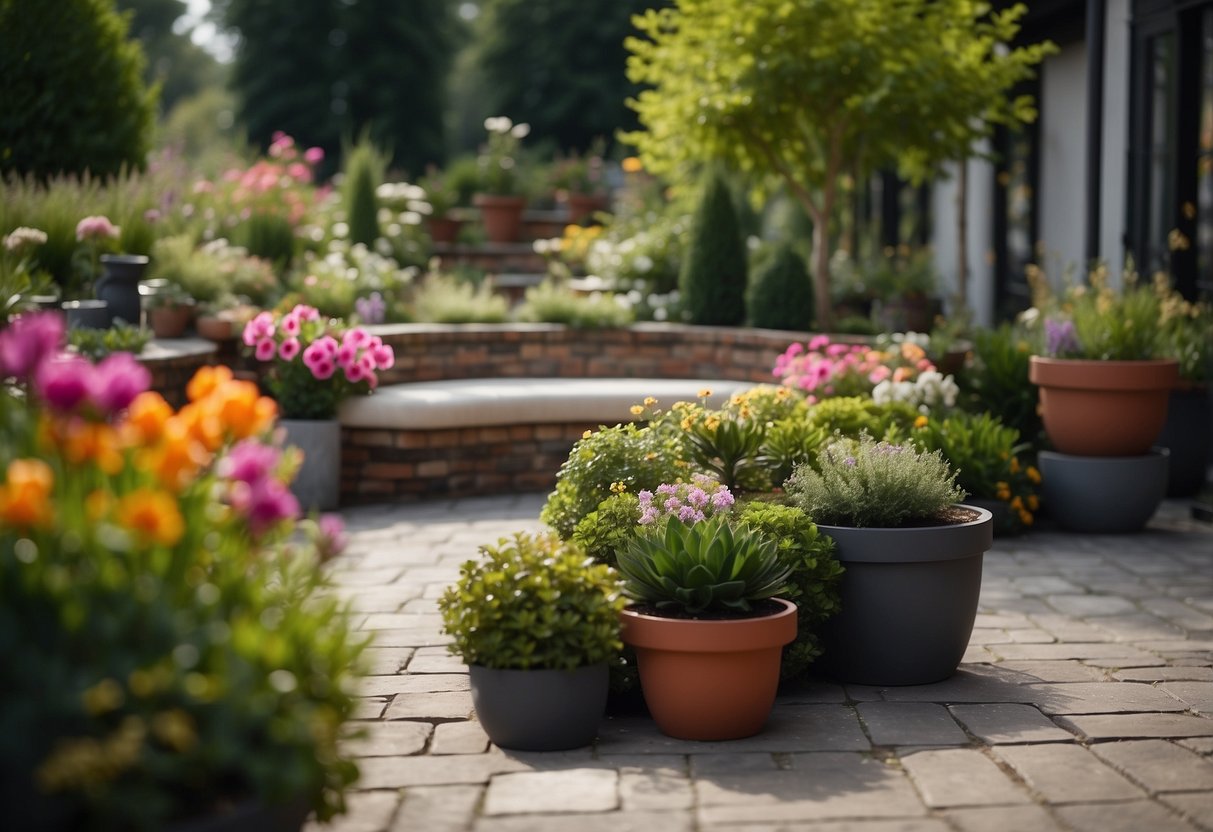
How can you turn a tarmac driveway into a vibrant garden? By using various landscaping techniques and creative ideas, you can cultivate flowers, vegetables, and even shrubs on a tarmac surface. Whether you’re working with a small area or a larger space, there are plenty of ways to make it work.
1) Permeable Block Paving
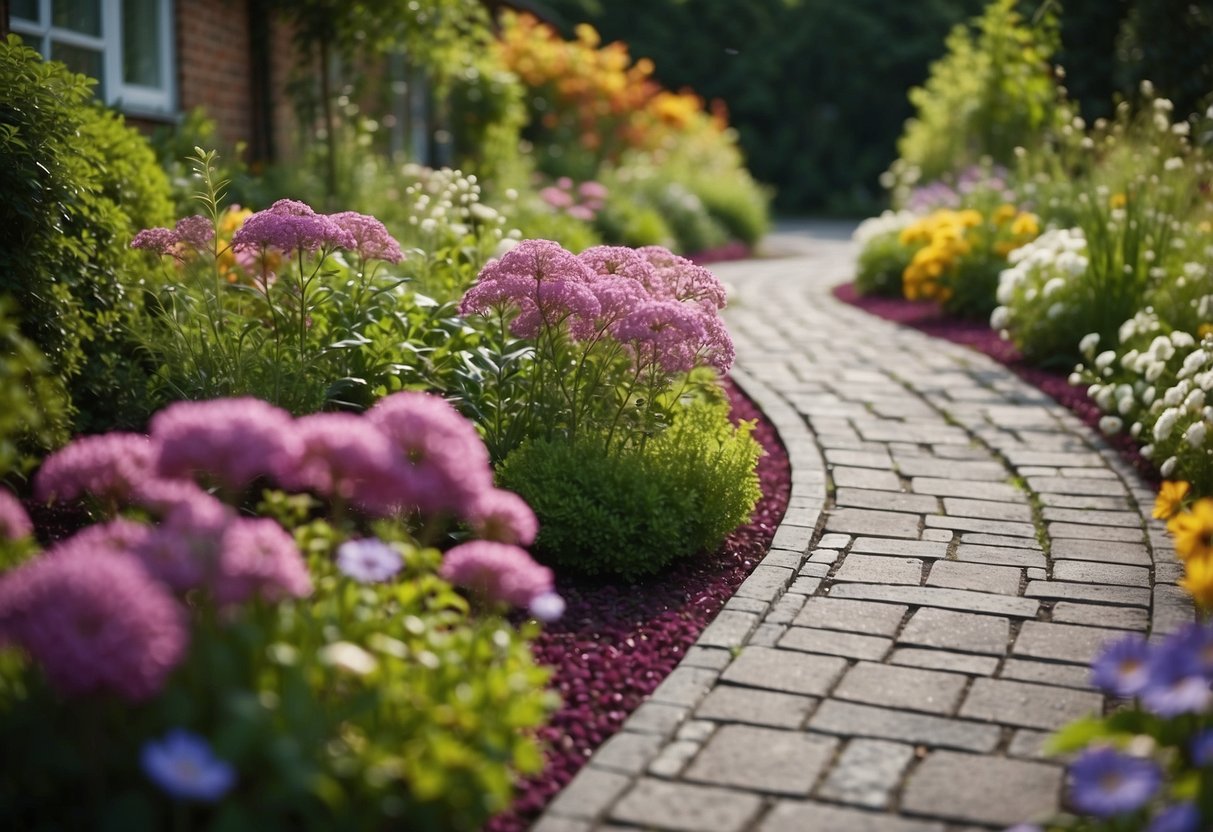
Permeable block paving can transform your garden by allowing rainwater to soak into the ground. This helps prevent flooding and reduces water runoff.
Using different shapes and colors of blocks, you can create visually appealing patterns. It’s a great way to make your driveway or patio look unique.
These blocks are easy to maintain. Just sweep the surface and occasionally remove weeds. They are also durable, holding up well under various weather conditions.
2) Resin Bound Gravel

Resin bound gravel is a fantastic option for your tarmac garden. It combines natural gravel with a strong resin binder, creating a durable and attractive surface. This type of gravel doesn’t shift or move, making it safe to walk on.
You can choose from various colors and textures to match your garden’s style. It’s a low-maintenance solution that merely requires occasional sweeping to look its best. It’s also permeable, allowing water to filter through, reducing puddles and improving drainage.
For more details on installation, check out this guide on creating resin bound patios.
3) Pattern Imprinted Concrete

Pattern imprinted concrete is a fantastic choice for your garden. It allows you to create unique designs on your driveway or patio. You can choose from many patterns like cobblestone or brick, and a wide range of colors.
This type of concrete is easy to maintain. The one-piece slab means fewer areas for weeds to grow.
If you want a sleek and modern look, pattern imprinted concrete is perfect. Plus, it adds a touch of elegance to any garden space. For more details, check out this Pattern Imprinted Concrete Driveway FAQ.
4) Slate Chippings
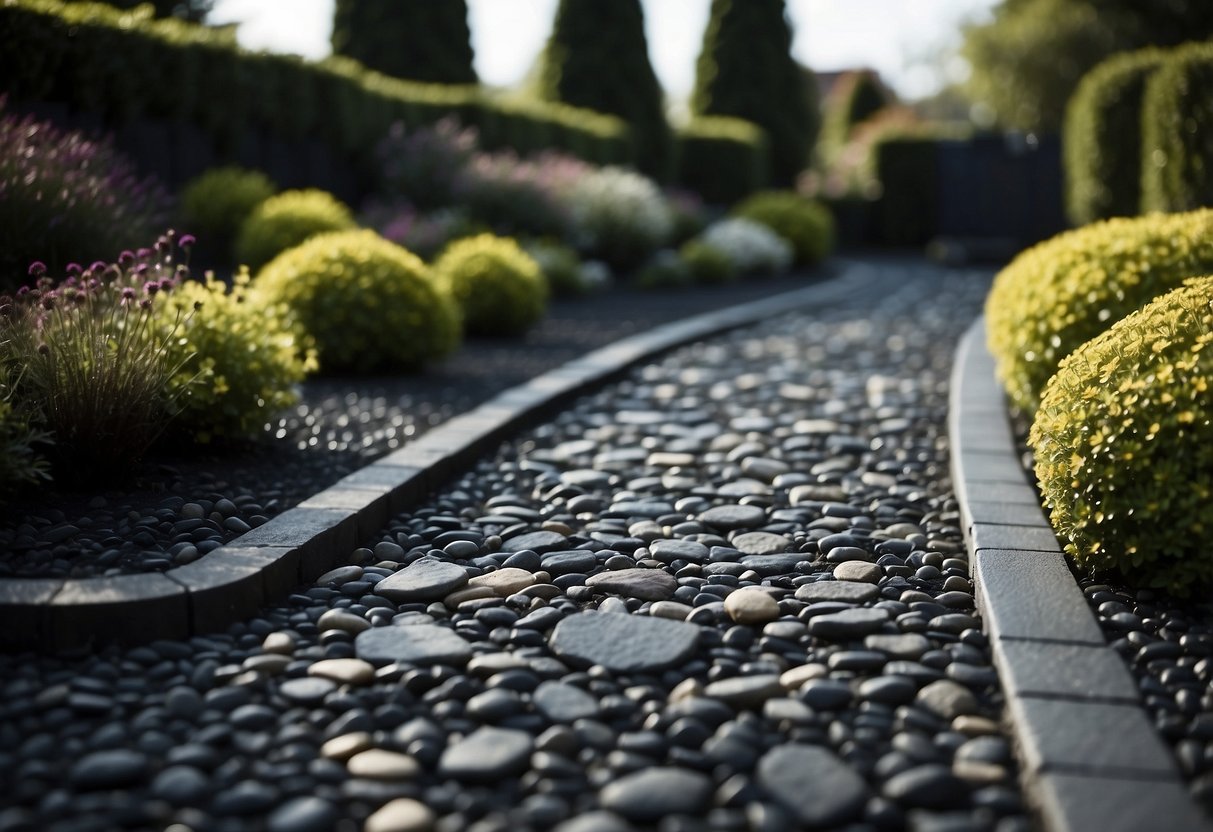
Adding slate chippings to your garden can create an elegant and durable surface. These chippings come in various sizes and colors, making it easy to match your garden’s style.
For garden paths, slate chippings are a great choice. They add texture and can lead to spots like flower beds and water features. If you want to keep your plants healthy, use slate chippings as mulch. They help retain moisture and deter weeds.
Another idea is to create borders around your planting beds with slate. This helps define the space and makes the beds stand out. For more tips on using slate chippings, check out Decorative Aggregates.
5) Cobblestone Driveways
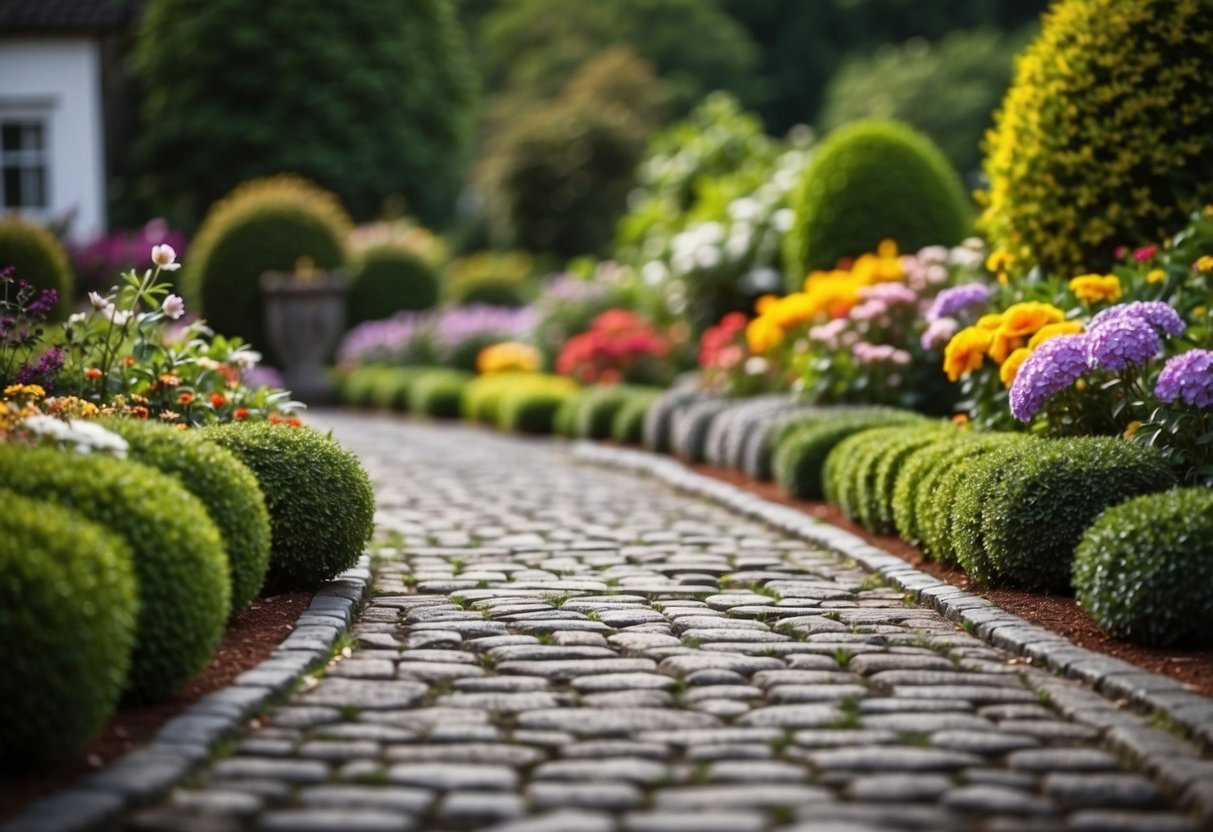
Cobblestone driveways bring a timeless and classic look to your garden. They add a touch of elegance and charm.
The natural stones can match various house styles, from traditional to modern. Cobblestones are also very durable, making them perfect for high-traffic areas.
For added beauty, consider using cobblestone borders to highlight garden beds or pathways. This small detail can make a big difference in your garden’s appearance.
Find more ideas on cobblestones at Buy Tiles and More.
6) Rubber Play Chippings
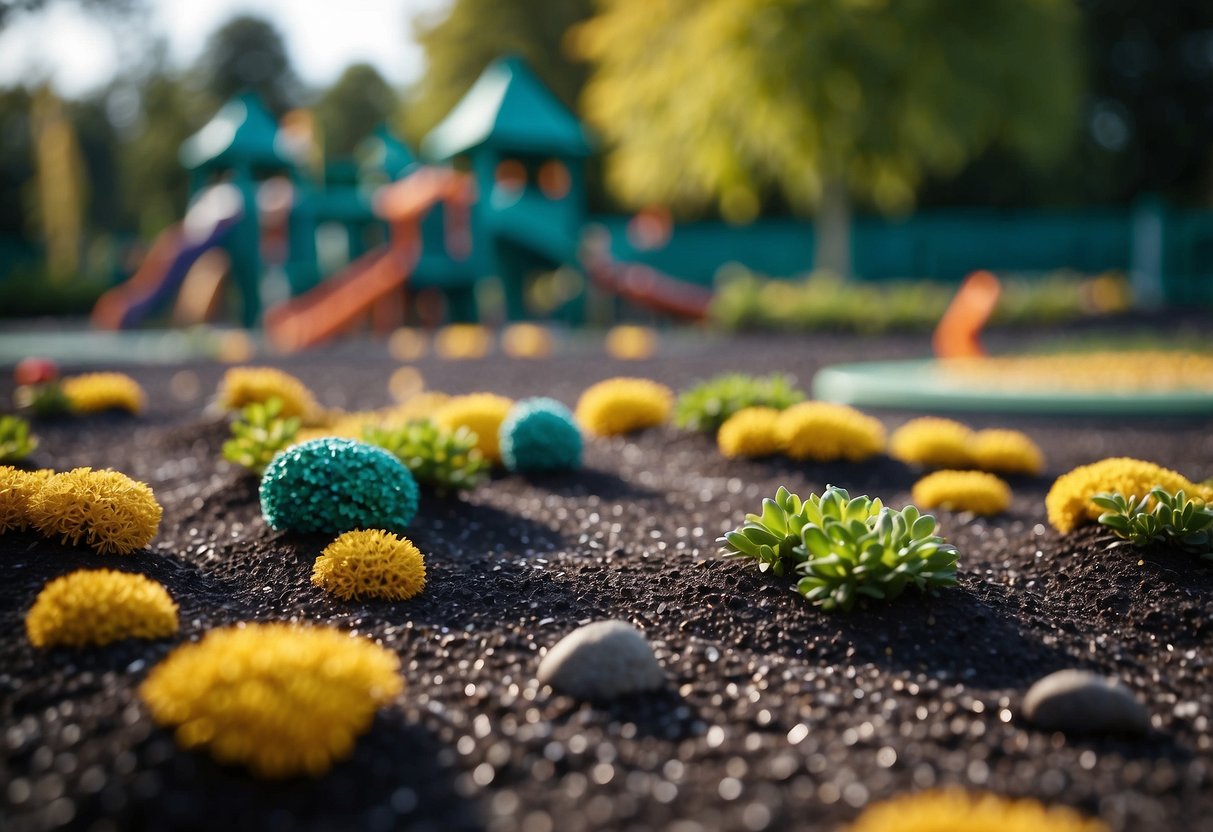
Rubber play chippings are a great way to make your garden safer and more colorful. They are made from recycled materials and are non-biodegradable, so you don’t need to replace them often.
These chippings are also safety certified and tested to ensure they are safe for play areas. Their cushioning effect is perfect for kids playing outside.
Using these chippings in your garden can help control weeds and provide a clean, finished look. Plus, they are easy to install. Consider rubber play chippings for a playful and safe garden space.
7) Tarmac and Astro Turf Combo

Combining tarmac and astro turf can create a stunning and low-maintenance garden design. Use tarmac for pathways and borders, and fill the inner sections with green astro turf.
This pairing offers a neat, clean look. You can lay artificial grass on tarmac easily by rolling out the turf, cutting it to size, and securing it.
For added visual interest, consider incorporating patterns. A pavers and synthetic turf combo can offer both sleekness and softness for your outdoor space.
8) Stone Paver Paths
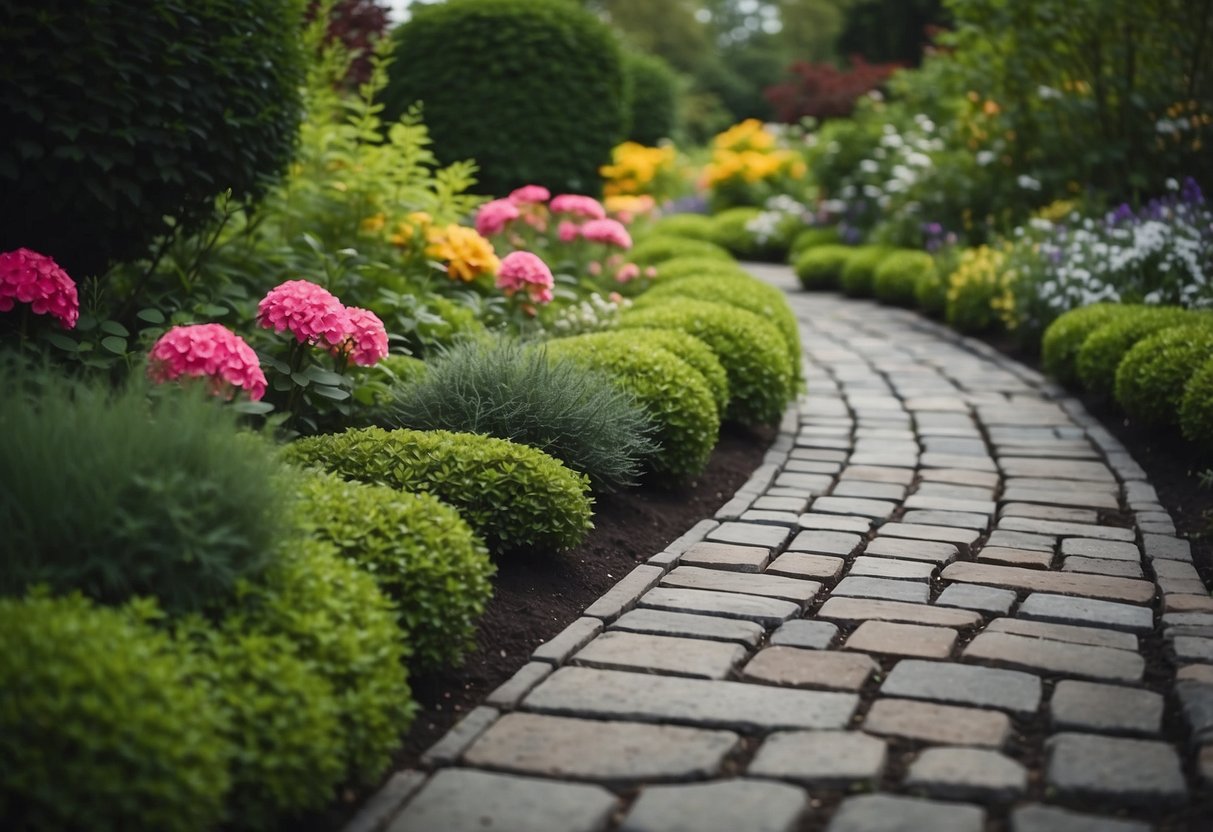
Stone paver paths add charm and elegance to your garden. They are versatile and can be arranged in various patterns to suit your taste. You can use different types of stones like flagstone, cobblestones, or cut stone.
A well-designed path can guide visitors through your garden. Combining stone pavers with ground covers like thyme or moss creates a natural, inviting look. Check out more ideas on the The Spruce for inspiration.
9) Recycled Rubber Pavers
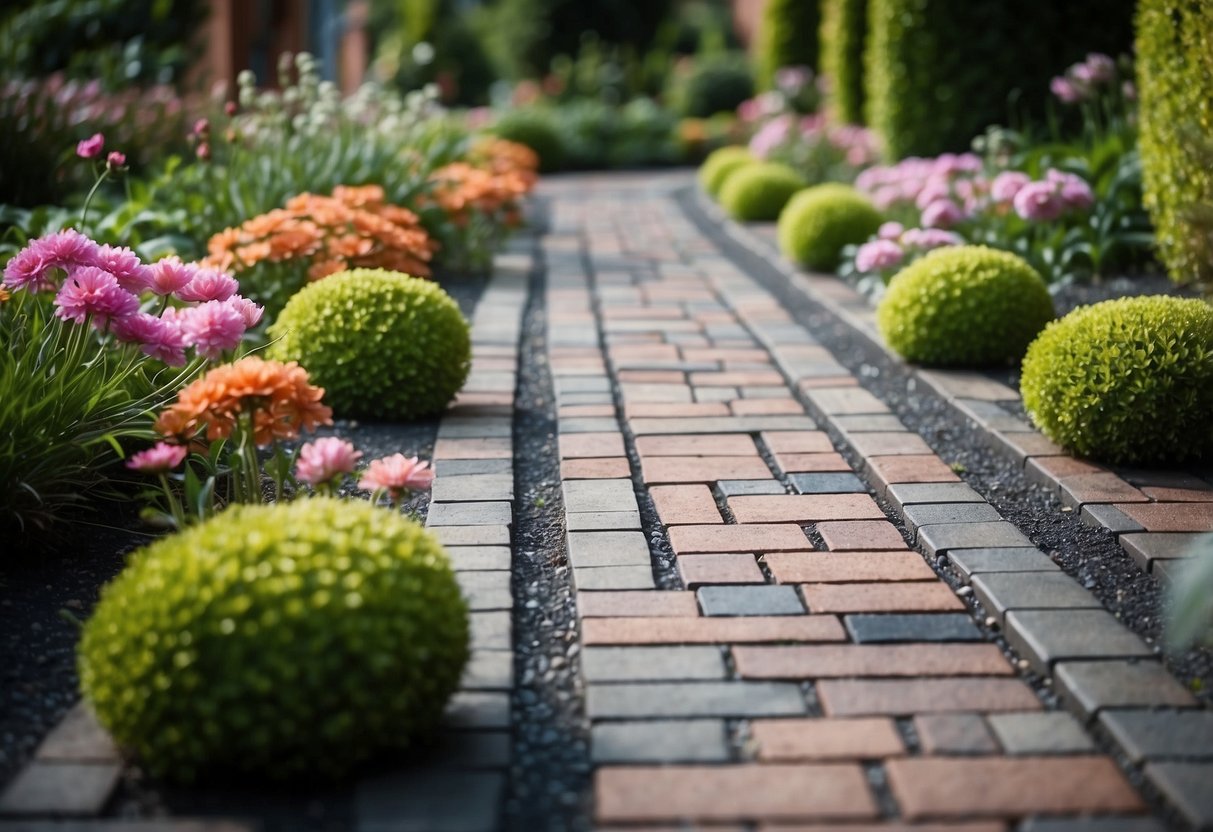
Recycled rubber pavers are a great choice for your garden. They are made from old tires, making them eco-friendly.
These pavers are soft underfoot, which is great if you walk barefoot in your garden. They also come in many colors and designs.
Recycled rubber is more crack-resistant than concrete. It is also slip-resistant, adding safety to your garden paths.
For more ideas on using recycled rubber pavers, visit Outdoor Happens.
10) Tarmac with Brick Insets
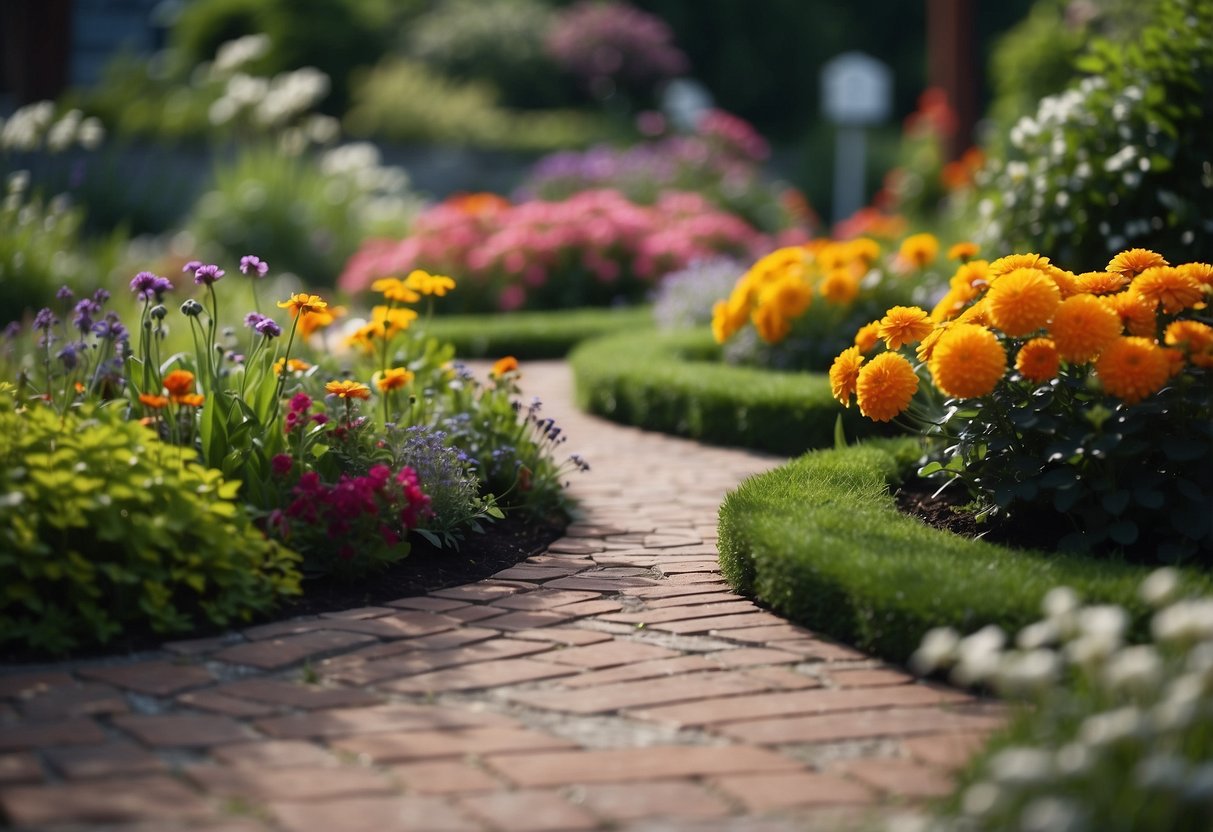
Mixing tarmac with brick insets adds a stylish touch to your garden pathways. The combination of sleek tarmac and the rustic look of bricks creates an eye-catching design.
The bricks can be arranged in various patterns, such as herringbone or simple straight lines. This not only makes the path interesting but also helps with durability by creating a sturdy edge.
Additionally, brick insets can define spaces, guide traffic, and add texture to your garden, enhancing its visual appeal and functionality. The colors and textures of bricks contrast nicely with the dark tarmac, making your garden stand out.
Types of Tarmac for Gardens
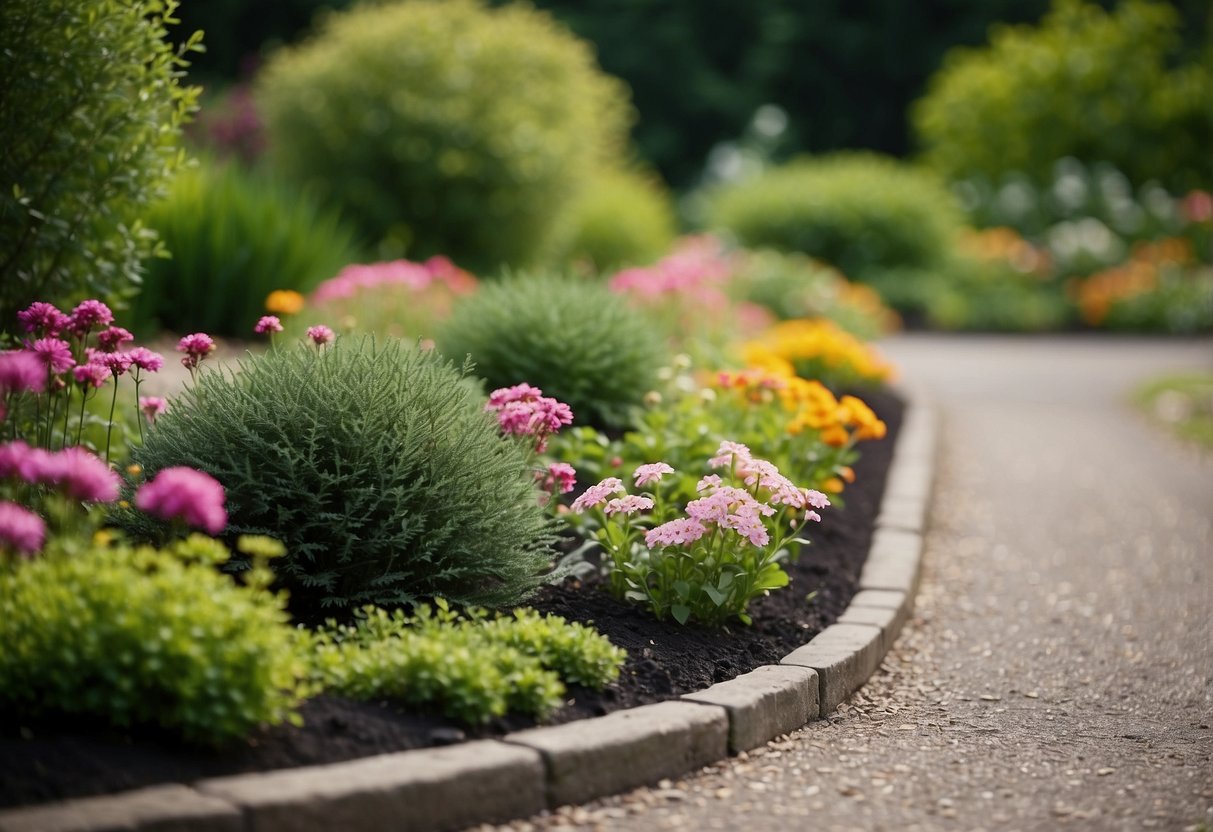
When considering tarmac for your garden, you have a few options to choose from. The two main types, traditional tarmac and resin-bound tarmac, each offer unique benefits. Let’s take a closer look at these types.
Traditional Tarmac
Traditional tarmac, also known as asphalt, is a popular choice for gardens due to its durability and cost-effectiveness. It’s made from a mix of bitumen and aggregate, giving it a dark, smooth finish that can enhance the appearance of your garden.
This type of tarmac is relatively easy to install, and it can last for up to 30 years with minimal maintenance. It allows for good water drainage, making it less likely to develop puddles or standing water.
You can also choose to color traditional tarmac to match your garden’s aesthetic. While it is durable, occasional resealing may help prolong its life and maintain its appearance.
Resin-Bound Tarmac
Resin-bound tarmac is a newer, more modern option that combines natural aggregate with a clear resin. This creates a smooth, porous surface that allows water to drain through, reducing the risk of flooding in your garden.
One of the main benefits of resin-bound tarmac is its visual appeal. It can be customized with different colors and textures to match your garden’s look.
It is also resistant to cracking and can withstand heavy use without deteriorating quickly. Regular cleaning and occasional resealing are recommended to keep it looking its best. Resin-bound tarmac tends to be more expensive than traditional tarmac, but its aesthetic and functional benefits often make it a worthwhile investment.
Design Ideas for Tarmac Gardens

You can transform your tarmac garden into a beautiful space by choosing a design style that suits your taste. Here are some ideas focusing on modern minimalist, rustic charm, and eco-friendly options.
Modern Minimalist
For a sleek and clean look, consider a modern minimalist design. Use simple, geometric shapes and a few statement pieces. You might add large, square tiles or dark stone to contrast with the tarmac.
Incorporate low-maintenance plants like succulents, which add a touch of green without much upkeep. A few well-placed concrete planters can provide a polished look. To finish, install some modern outdoor furniture, like metal chairs and a glass table. Creative lighting, such as LED strips, can enhance the sleek, modern vibe at night.
Rustic Charm
If you prefer a cozy and inviting space, go for rustic charm. Use materials like wood and stone to soften the hard look of tarmac. Wooden planters or a vertical timber retaining wall can make a big difference.
Fill these planters with flowers like fuchsias or camellias, which thrive well and add color. Old barrels or vintage metal tubs can serve as unique planters. Add a wooden bench or a small water feature to enhance the rustic feel. You can also place gravel paths to break up the tarmac and give a more textured look.
Eco-Friendly Options
For those looking to be environmentally conscious, eco-friendly options are ideal. Start by using recycled materials wherever possible. Concrete can be replaced with permeable paving stones to allow for better water drainage.
Create a well-watered container garden with herbs, vegetables, and flowers. Use native plants that require less water and care. Solar-powered garden lights are a great eco-friendly way to add some illumination. Composting bins and rain barrels can also be incorporated into your garden to make it more sustainable.
By choosing the design that fits your style, you can turn your tarmac garden into a delightful outdoor space.
Maintenance Tips for Tarmac Gardens
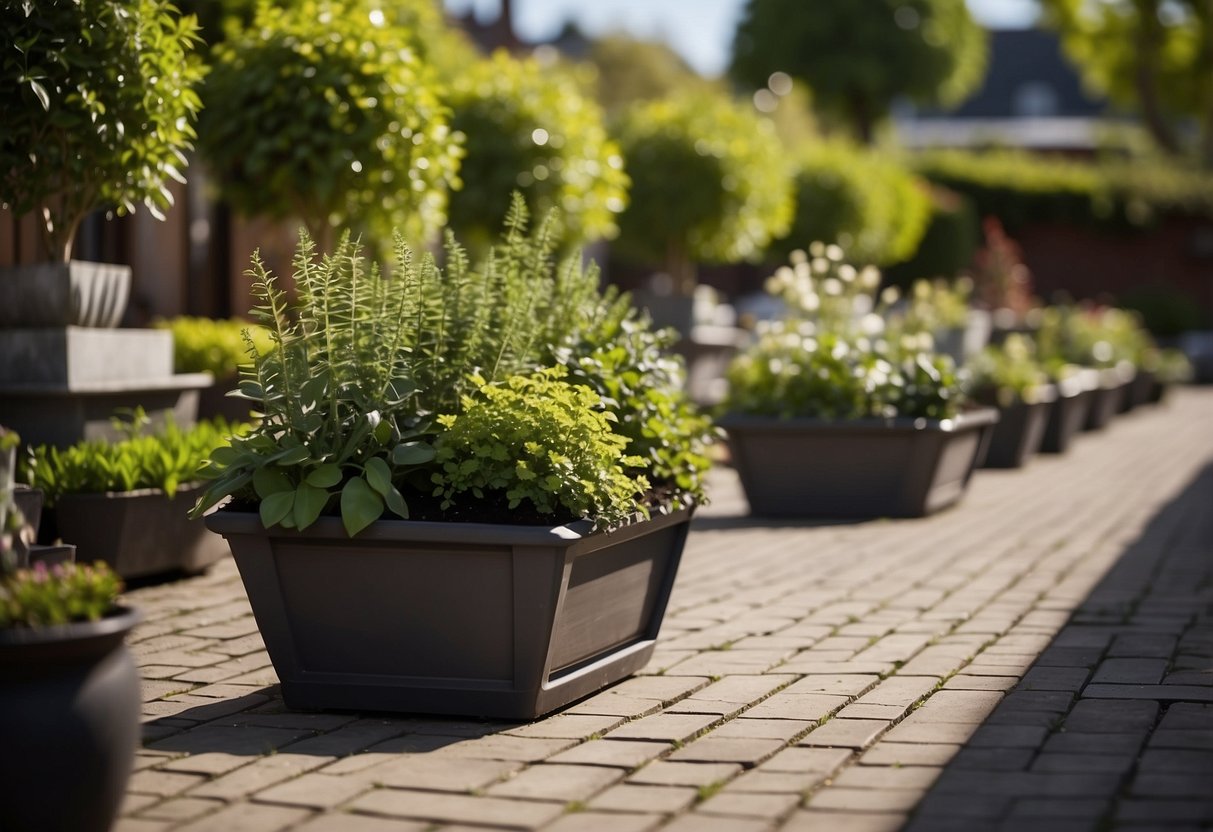
Maintaining a tarmac garden involves keeping it clean and repairing any damage promptly to ensure its longevity and appearance. Here are some tips to help you keep your tarmac garden in great shape.
Regular Cleaning
Regular cleaning helps keep your tarmac garden looking tidy and prevents weeds. You can use a stiff broom or a leaf blower to remove debris like leaves, twigs, and dirt. This not only keeps your garden neat but also reduces the risk of stains.
Occasionally, you should wash the tarmac with soapy water and a pressure washer. Mild soap mixed with water is enough. Avoid using harsh chemicals that can damage the tarmac. After scrubbing, rinse the area thoroughly to remove soap residue.
If you notice any oil stains, you can clean them with a degreaser. Make sure to read the instructions and test any cleaning product on a small area first. Regular cleaning helps prevent buildup and keeps your garden looking fresh.
Repairing Cracks and Holes
Cracks and holes in the tarmac can worsen if not fixed promptly. Temperature changes and heavy use can cause these issues. You can use cold lay tarmac or repair kits available at hardware stores for small repairs.
Start by cleaning the area around the crack or hole to remove debris. Fill the crack or hole with the repair material, ensuring it’s level with the surrounding tarmac. Compact it using a tamper or similar tool. For larger repairs, you might need professional help.
Routine inspections can help you spot early signs of damage. Fixing minor issues quickly prevents bigger problems and maintains the smooth surface of your tarmac garden. Remember, addressing small repairs right away saves more extensive work later.







